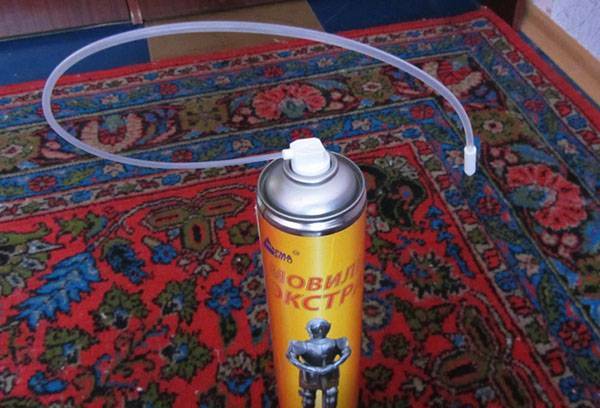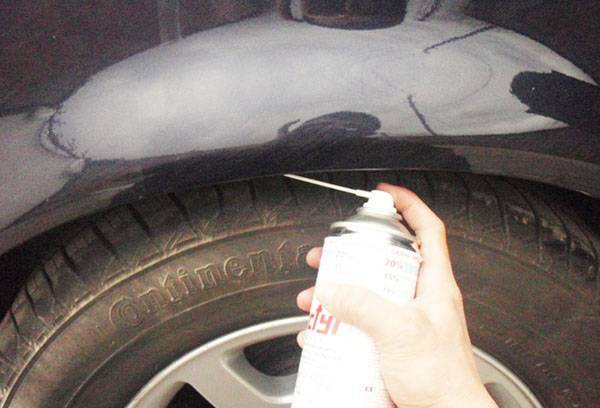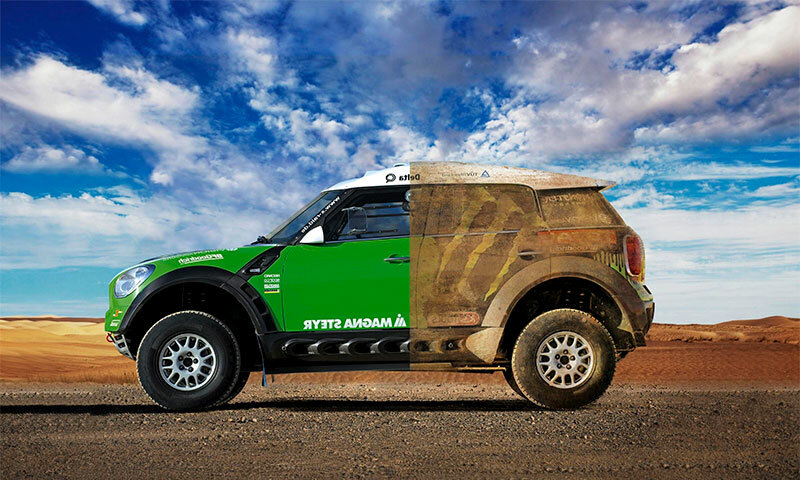Contents:
- Composition and operating principle of Movil
- Manufacturers of
- What is cheaper? For what surfaces is the antifreeze "Movil" intended?
- Instructions for use
- How do I process hidden cavities?
- Precautions for operation
- Myths and Facts
Movile with rust converter - aerosol and liquid, is used for the preservation of hidden cavities in the body of the car. Its purpose is to transform the existing rust and prevent the formation of a new one. This is only one of the anticorruption, but it is one of the first, which began to produce in Russia, so it is most known to motorists.
Initially, the formula of this tool was developed by the Research Institute of Moscow and Vilnius, which was reflected in the name. To date, this formula has been improved and various ingredients have been introduced to improve corrosion resistance properties, including rust converters. Anticorros in the "Moville", whose name is indicated "with a rust converter" produced by several Russian companies.

Composition and operating principle of Movil
Movile with a converter refers to PINSam - film-forming inhibited oil compositions. Its effect is that due to penetrant inhibitors, the agent penetrates into the micropores of iron oxide, the converter transforms the oxides into a noncorrosive form of iron, and the polymer resins form a film on the surface. The film blocks the access of water and oxygen, so that further oxidation is impossible.
This anticorrosive compound contains the following substances:
- linseed oil;
- engine oil;
- white spirit;
- kerosene;
- rust converter;
- inhibitors.
Which converter is included in the movile depends on the manufacturer. For example, in "Autoconservate" from "AGAT-AUTO" as a converter used tannin, transforming the residual oxides in iron tannate.

Manufacturers
To date, for sale are presented movers with a rust converter of such manufacturers:
- "Eltrans" - aerosol with a rust converter;
- "Astrohim" - "Movil Antiruster", an aerosol with a rust converter;
- «AGAT-AUTO» - «Autovecervant« Movil »», aerosol with rust converter;
- "Development of PKF" - "Movil NN MasterWax with rust converter", liquid and aerosol.
Quite good reviews about the anticorrosion produced by Eltrans. He has a memorable design: the vials depict a medieval knight. They also speak well of the "Movil NN MasterWax" manufactured by the PCF "Development".
What is cheaper?
To date, "Movil" aerosols, which contain a rust converter, are approximately in the same price range - about 300 rubles per liter. The final price may vary depending on the region where the car chemistry is sold, and the quantities of the purchased anticorrosion. Traditionally, the means in small packages cost a little more.
Means in the form of a liquid are approximately two times cheaper than aerosols( about 150 rubles per liter).If it is supposed to apply the product to the surface to be protected with a brush, then there is the possibility to save. The liquid can also be sprayed. For what surfaces is the antifreeze "Movil" intended?
Anticorrosive with rust converter can be used on metal surfaces, including coated paint. You can not cover this tool with rubber parts and any surfaces covered with synthetic mastics or other synthetic chemicals.
Automobile owners use movil mainly for processing closed cavities - thresholds, racks, surfaces behind the radiator lining. Using it to protect the bottom and outer parts is inadvisable, since it does not have mechanical strength. Do not use this anticorrosion inside the cabin, as it has a more pronounced chemical odor than a conventional movil.

Instruction for the use of
For easily accessible places, the movil is applied as follows.
- Surface preparation: dirt and rust are cleaned off the metal( upper loose oxide layer), after which it is degreased.
- Dry the surface.
- Application of the 1st movil layer( the temperature should be within + 10 ° C to + 30 ° C).The spray is applied through the spray head, and the spout and tube are removed( they are designed for hard-to-reach places).The liquid is applied with a roller or brush.
- Intermediate drying. If necessary, it can be accelerated by covering the place of treatment with warm air.
- Application of the second and third layer( with another intermediate drying).
- Finish drying. The final drying of the composition takes place approximately two hours after the application of the last layer.
Tip
If during treatment the product has got on the front surface, it must be wiped with a bitumen stain cleaner immediately.

How do I process hidden cavities?
The processing of hidden cavities has its own characteristics.
- It is necessary to remove those elements that interfere with access to the surfaces to be treated.
- Rinse the cavity with water through the drain holes. Before cleaning, check and, if necessary, clean the holes.
- Treat the cavity with a rust converter, then rinse with an alkaline reagent. The reagent is selected depending on the type of converter.
- Dry the cavity with warm air.
- Apply anticorrosive layers with intermediate drying.
Tip
For spraying, sprayers with a working pressure of 4-12 MPa( airless application) or 2-4 atmospheres( air method) are suitable.

Precautions for operation
Do not allow the product to reach unprotected areas of the body. It is necessary to apply the movile either outdoors or in a well-ventilated room. If the product still gets on the skin, it is necessary to wash it off with white spirit. Anticorros refers to flammable materials, so smoking when it is applied is not worth it.
When storing and transporting, it must be taken into account that direct sunlight and heating above +50ºC, as well as near open flame sources are not allowed. In aerosol cans, the product is under pressure, so the temperature of transport and storage should be even lower - up to + 40º C. Another safety measure is to store car chemistry in places inaccessible to children.

Myths and Facts
There are many rumors about car owners among car owners. Some of them turn anticorrosion into an extraordinary miracle remedy, others on the contrary, deny all positive moments. It is worthwhile to deal with fables to use the product for its intended purpose and to get the expected effect as a result.
- Myth 1.
Movile with the converter can be applied to the metal with any layer of rust - the chemistry will "eat".In fact, a loose layer of oxides must necessarily be cleaned. The converter can only cope with the residual layer, which is difficult to remove from the metal. That is, using such a tool, the metal does not need to be scraped to shine, but the "outgrowths" of rust and dirt need to be removed.
- Myth 2.
Aerosol consumption is less than liquid. In reality, both liquid and spray must form a uniform thin layer on the metal. And in either case, the consumption will be approximately 400-500 ml per square meter.
- Myth 3.
Movil, produced in the Soviet era, was real, and now sell compounds that are much worse. In reality, only counterfeit can be worse in quality, since official manufacturers are interested in good reviews and increasing sales of their products, and not in complaints and the return of poor-quality chemistry. At the same time, the consistency and appearance of the anticorrosive can differ from its "grandfather", as manufacturers are trying to improve such qualities as fluidity during application, resistance to high temperatures, anti-corrosion properties. The improvement is due to new inhibitors and additives, for example, a rust converter, so the smell, color, density of the composition changes.
- Myth 4.
It is enough to apply 1 time when buying a car. Opposite, but the same wrong opinion - to smear cavities movil every month. Those who used such autochemistry know that the remedy will protect the machine for several years if hidden cavities are treated and will serve no more than a year on surfaces subject to mechanical influences.
Read the article: How to choose a rag for washing the floor



